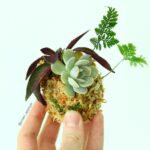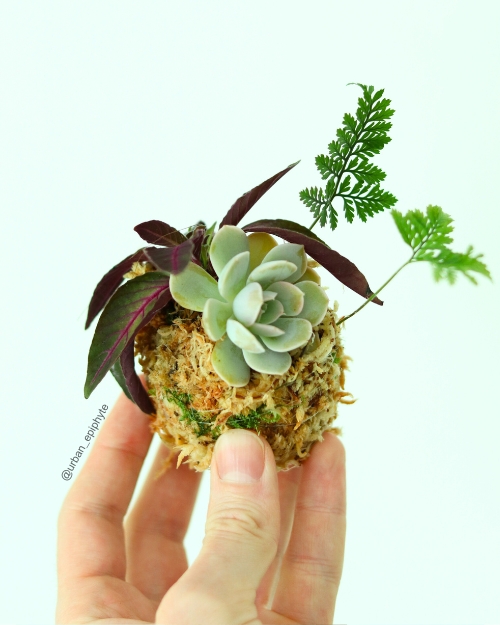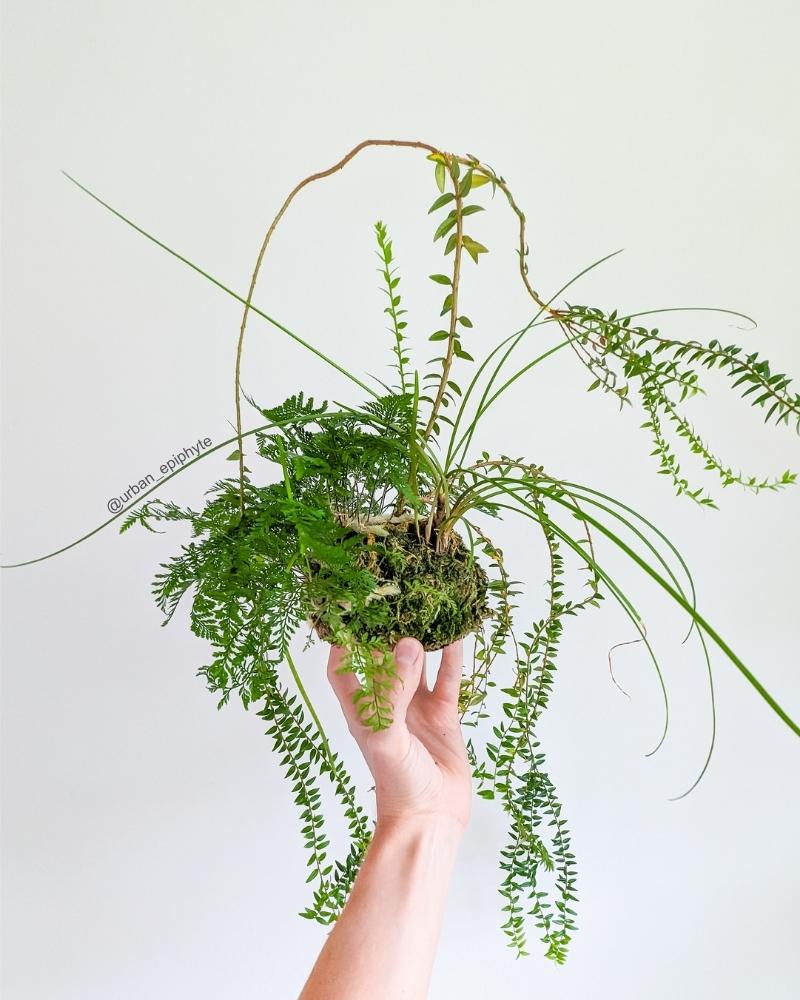Gilded & Blossoming 2023 Tamandama workshop
Please support Seattle’s LGBTQ+ Center at gaycity.org/Donate!
Thanks for stopping by my little tamandama workshop at Gilded and Blossoming! Please feel free to reach out if you have any questions, either on Instagram or by email, or subscribe for updates below. I also accept tips on Ko-Fi or Venmo.
PS: I recommend bookmarking this page so you can refer back to it later.
Happy growing!
Care for your Tamandama
Your tamandama may need a few weeks of strong light, constant moisture, and elevated humidity in order to get established! You can keep it humid in a plastic bag, terrarium, or deli cup, just make sure it gets aired out from time to time and that it stays out of direct sunlight.
These are intended to be kept indoors in our climate 🙂
Displaying Your Tamandama
I recommend placing your moss ball in a small waterproof tray or bowl so that you can water it more easily (see watering info below).
A terrarium, cloche, or vase is a great way to display your piece and keep it humid (so you don’t have to water as much). Ikea has some cute, affordable options.

Watering
Keep your tamandama moist! Most plants offered need to stay moist to survive. If you opted for only cactuses and succulents, they can dry out a bit more, but will grow the fastest if they don’t stay dry for long.
Bottom watering or soaking works well for these moss balls – if you add water beneath them, they will soak it right up. Remember to thoroughly rinse it occasionally to leach out salts that can build up over time
Light
Your tamandama will do best with plenty of light. Place it near a bright windowsill where it gets dappled sun for at least part of the day. An east or west facing window is best.
Alternatively, grow lights or strong artificial lighting works well. A setup like this one will provide plenty of light and provide a tidy look, or there are many other grow light options that will work.
Remember that if your tamandama is in an enclosed container, like a terrarium, the interior temperature will rise to dangerous levels if it receives any direct sun.
Longer Term Care
Your tamandama will benefit from periodic applications of water soluble fertilizer at half the dose recommended on the label (usually this means roughly 1/2 tsp of fertilizer per gallon of water). Alternatively, you can use a time-release fertilizer like osmocote; for a small tamandama, you will only need a few pellets added every few months.
If your tamandama grows well and the plants get so big that you cannot keep up with watering them, you can pot the plants up in a larger pot, trim the plants, or re-build the tamandama with a larger mass of media (more media means more water-holding capacity). Another option is to keep it in a humid terrarium or cloche.
Plants Used in the Workshop and Their Characteristics
- Epiphyllum ‘Ackermannii Redivivus’ – eventually grows quite large and will produce bright red flowers when mature. Also known as orchid cacti.
- Epiphyllum ‘Orange Bouquet’ x ‘Purple King’ – similar to above, but produces salmon orange flowers.
- Davallia fejeensis – the white rabbit’s foot fern. Produces a fuzzy white rhizome and stays fairly compact when mature. This fern adds volume to the moss ball as it grows and helps hold it together.
- Ruellia makoyana – lovely foliage and produces bright pink flowers. Bushy growing habit. Does not like to dry out.
- Poaceae sp. ‘Purple Bamboo’ – Adds a lovely grassy texture. Likes wet feet. Easy to propagate by cutting off the top and re-planting in the substrate.
- Dyckia ‘Lad Cutak’ – A clumping bromeliad (pineapple/airplant family) that stays compact.
- Peperomia ‘bibi’ – A small but fast and easy to grow trailing plant.
- Scilla pauciflora – Lovely spotted foliage. Clumping habit.
- Columnia microphylla – miniature plant with a stunning trailing habit. Produces bright orange and red flowers.
- Columnea erythrophaea – similar to above but grows larger and has solid red flowers.
- Aeschynanthus buxifolius – box leaf lipstick plant. Nice bright green foliage and a beautiful trailing habit. Produces bright red flowers.
- Oxalis triangularis – a sort of “shamrock” or wood sorrel. It has cute triangular, 3 parted leaves, and produces white flowers nearly constantly.
- Anthurium rupicola – an uncommon panamanian aroid that can acclimate to a variety of conditions.
- Christmas moss – this was the live moss offered to “seed” your tamandama. It may die back initially but if kept moist it should regrow. Humidity helps!
Stay Connected
Please leave your information below to hear about upcoming shop updates, new blog posts, and more. Please feel free to message me on Instagram if you have any questions, or shoot me an email.

